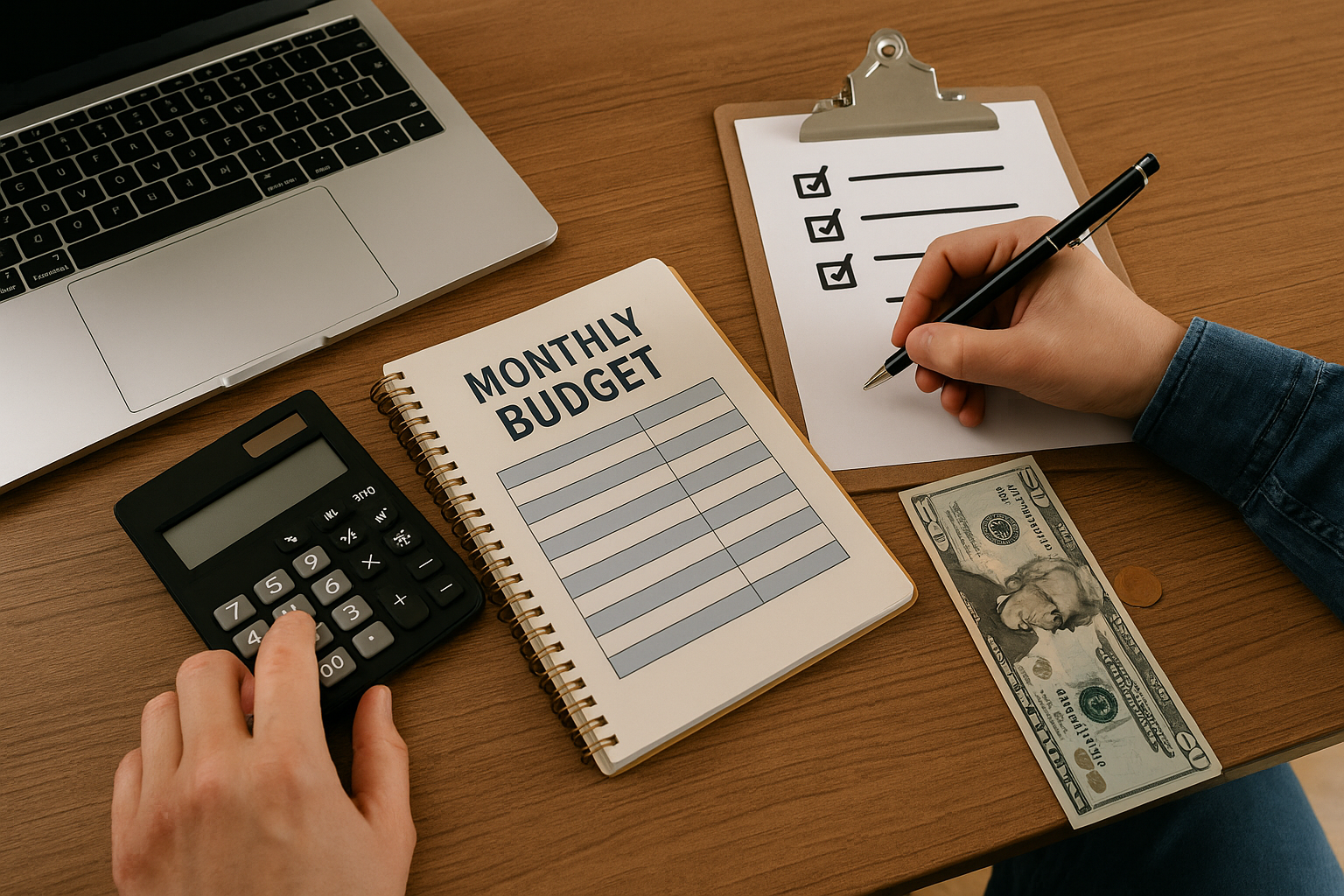Learning how to create a monthly budget isn’t just about tracking expenses—it’s about designing a plan that puts you in control of your money. A realistic and consistent budget can help you pay off debt, build savings, and feel more confident about your financial future.
In this guide, we’ll walk you through 7 proven steps to build a monthly budget that works, and how to stick to it long-term.
What Is a Monthly Budget and Why Do You Need One?
A monthly budget is a plan that tells your money where to go. It’s the foundation of good financial health and the first step toward reaching goals like debt freedom, emergency savings, or financial independence.
Benefits of budgeting include:
- Reducing unnecessary spending
- Eliminating debt faster
- Growing your savings consistently
- Preparing for emergencies
- Feeling in control of your money
Whether you’re a beginner or revisiting your finances, a good monthly budget gives you clarity and peace of mind.
1. Start by Calculating Your Net Monthly Income
The first step in learning how to create a monthly budget is knowing exactly how much money you have coming in. This includes:
- Paychecks (after tax)
- Freelance or side hustle income
- Business income
- Government benefits or pensions
💡 Tip: Use your net income (after taxes) for a more accurate picture.
If your income fluctuates, average the past 3-6 months to find your baseline.
2. Track Your Expenses for 30 Days
Before assigning amounts to budget categories, spend 30 days tracking your real expenses. Look at your:
- Bank statements
- Credit card bills
- Mobile wallet transactions (like PayPal, Venmo, or GCash)
Sort them into categories like:
- Rent or mortgage
- Groceries
- Utilities
- Entertainment
- Subscriptions
- Transportation
You can’t manage what you don’t measure.
3. Set Realistic Financial Goals
What do you want your budget to help you achieve?
Some popular goals include:
- Building a 3- to 6-month emergency fund
- Paying off credit card debt
- Saving for a car or house
- Taking a dream vacation
- Investing for retirement
These goals guide your spending and help you stay motivated. Write them down.
4. Choose the Right Budgeting Method for You
There’s no one-size-fits-all approach. Some popular budgeting methods include:
🧮 Zero-Based Budget
Every dollar gets a job. You assign your income to different categories until you hit zero. Great for detailed planning.
💵 50/30/20 Rule
- 50% for needs
- 30% for wants
- 20% for savings and debt repayment
Ideal for beginners.
💌 Envelope System
Use cash for each category (or digital “envelopes” in apps) and stop spending when the envelope runs out.
5. Build and Balance Your Budget
List all your expenses. Start with essentials:
- Rent
- Electricity and water
- Groceries
- Insurance
- Minimum debt payments
Then move on to variable and optional expenses:
- Dining out
- Shopping
- Streaming services
- Gym memberships
Allocate what’s left toward savings, debt payoff, or your financial goals.
6. Review and Adjust Weekly
Don’t wait until the end of the month. Check in every week.
Ask yourself:
- Am I staying within each category?
- Did any unexpected expenses pop up?
- Can I reduce spending in one area?
Be flexible, budgets are living documents. Download a free tracker like NerdWallet’s Budgeting Calculator to simplify the process.
7. Make It Stick: Tips to Stay on Track
Here’s how to make your budget a long-term habit:
- Automate savings and bill payments
- Use budgeting apps like YNAB, Mint, or EveryDollar
- Set calendar reminders for weekly check-ins
- Celebrate small wins to stay motivated
- Build a buffer for unexpected expenses
External Resources That Can Help
Here are some trusted guides and tools to help you stay consistent:
Final Thoughts: Creating a Monthly Budget Is the First Step Toward Financial Freedom
The secret to success isn’t just creating a monthly budget—it’s sticking to it. Start small, check in weekly, and adjust along the way. With time, your budget will feel less like a restriction and more like a tool for freedom.
If you’ve struggled with budgeting in the past, this is your fresh start. Download a free budget tracker, set your goals, and take control of your money today.

